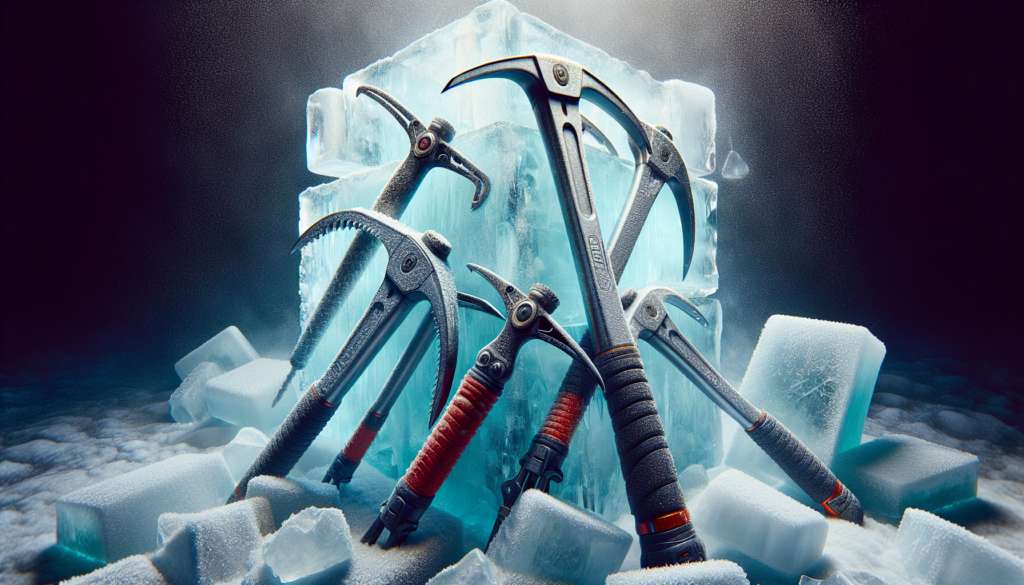Exploring the Fascinating World of Ice Axes
When it comes to climbing icy slopes, navigating treacherous glaciers, or tackling challenging alpine routes, one tool stands out as indispensable – the ice axe. This iconic piece of equipment has been a staple in the mountaineering world for centuries, aiding climbers in their conquest of some of the world’s most formidable peaks. But what makes the ice axe such a crucial tool for climbers? How has its design evolved over time? And what role does it play in modern mountaineering? Let’s delve deep into the world of ice axes to uncover the answers to these questions and more.
The History of Ice Axes
The history of the ice axe can be traced back to the early days of mountaineering when climbers relied on simple wooden poles to navigate snowy and icy terrain. The concept of using a sharp implement for cutting steps in ice and snow dates back to the early 19th century, with early versions of the ice axe featuring a pick at one end and a spike at the other.
One of the most significant developments in the history of the ice axe came in the late 19th century when Swiss mountaineer and guide, Peter Taugwalder, introduced the concept of the “piolet,” a lightweight ice axe that revolutionized alpine climbing. The piolet featured a curved pick for better purchase on ice and a straight shaft for improved ergonomics.
Over the years, the design of the ice axe continued to evolve, with modern versions incorporating lightweight materials such as aluminum and carbon fiber, as well as ergonomic grips for increased comfort and control. Today, ice axes come in a variety of shapes and sizes, each tailored to specific climbing styles and conditions.
The Anatomy of an Ice Axe
Before we delve into the various types of ice axes available today, let’s take a closer look at the anatomy of this essential tool. An ice axe typically consists of four main components:
1. Head
The head of an ice axe is the business end of the tool, featuring a pick for penetrating ice and a adze for chopping steps or clearing snow. The pick is usually slightly curved to provide better purchase on ice, while the adze is flat for efficient cutting and chopping.
2. Shaft
The shaft of an ice axe is the long, straight section that connects the head to the grip. Shafts can be made of various materials, with aluminum and carbon fiber being popular choices for their lightweight and durable properties.
3. Spike
At the bottom of the shaft, you’ll find the spike, a pointed end that provides stability and grip when planting the ice axe in snow or ice. The spike is essential for anchoring the axe securely in place while climbing.
4. Grip
The grip of an ice axe is where the climber holds the tool, providing comfort and control while ascending steep terrain. Grips can vary in shape and materials, with some featuring ergonomic designs for improved handling.
Types of Ice Axes
There are several types of ice axes available, each designed for specific climbing styles and conditions. Some of the most common types include:
1. Alpine Ice Axes
Alpine ice axes are versatile tools that are suitable for a wide range of climbing activities, from glacier travel to steep ice and mixed terrain. These axes typically feature a curved pick for better ice penetration and a lightweight design for easy carrying.

2. Technical Ice Axes
Technical ice axes are designed for more challenging ice and mixed climbing routes, featuring a more aggressive pick angle and a shorter shaft for improved precision and control. These axes are ideal for steep ice and technical alpine routes.

3. Classic Ice Axes
Classic ice axes are traditional tools that are well-suited for moderate alpine terrain and glacier travel. These axes often feature a straight shaft and a moderate pick angle, making them versatile and easy to use for a wide range of climbing activities.
Choosing the Right Ice Axe
When it comes to selecting the right ice axe for your climbing adventures, there are several factors to consider. Some of the key considerations include:
1. Climbing Style
Consider the type of climbing you’ll be doing most often, whether it’s glacier travel, steep ice climbing, or technical alpine routes. Choose an ice axe that is tailored to your specific climbing style and skill level.
2. Length
The length of the ice axe shaft is crucial for comfort and performance. A longer shaft provides better reach and leverage on steep terrain, while a shorter shaft offers improved precision and control on technical routes.
3. Weight
Opt for a lightweight ice axe that won’t weigh you down during long days in the mountains. Aluminum and carbon fiber shafts are popular choices for their durability and low weight.
4. Pick Angle
The pick angle of an ice axe determines its performance on ice and mixed terrain. A steeper pick angle offers better penetration on hard ice, while a more moderate angle provides versatility for a variety of climbing conditions.
Expert Opinions
To provide further insights into the world of ice axes, we reached out to renowned mountaineer and guide, Emily Harrington. Here’s what she had to say:
“The ice axe is a timeless tool that has been essential for mountaineers for generations. Its versatility and reliability make it a must-have for any climber tackling icy terrain. Choosing the right ice axe can make all the difference in your climbing experience, so take the time to find the perfect tool for your adventures.”
Conclusion
To wrap things up, ice axes are more than just tools – they are symbols of human ingenuity and perseverance in the face of nature’s challenges. From their humble beginnings as wooden poles to their modern incarnations as lightweight, high-performance tools, ice axes have played a vital role in the history of mountaineering.
Whether you’re a seasoned alpinist or a beginner climber, having the right ice axe can make all the difference in your mountain adventures. So, take the time to research and choose the perfect tool for your needs, and remember that the ice axe is not just a piece of equipment – it’s a trusted companion on your journey to the summit.

